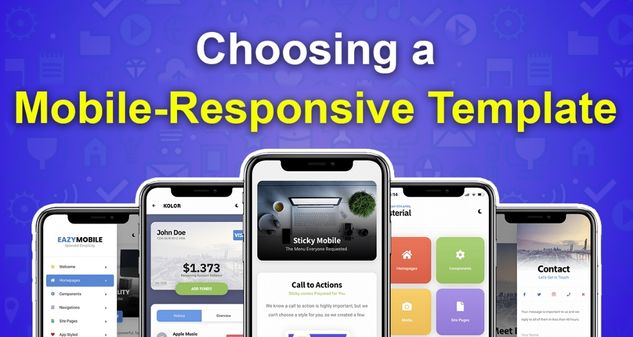In today’s fast-paced digital world, having a mobile-friendly website is no longer optional—it’s a necessity. With a significant portion of online traffic coming from mobile users, optimizing your Squarespace website for smaller screens can make a big difference in user experience, engagement, and even conversions. If your site isn’t easy to navigate on a smartphone or tablet, potential customers may leave before they even explore what you have to offer. Fortunately, Squarespace offers built-in tools to ensure your site looks great on any device, but there are additional steps you can take to improve its performance. In this guide, we’ll walk you through the best practices for keeping your Squarespace website mobile-friendly.
- Choose a Mobile-Responsive Template
- Optimize Images and Media for Faster Load Times
- Streamline Your Navigation for Mobile Users
- Improve Loading Speed and Performance
- Optimize Fonts, Buttons, and Spacing
- Make Forms Mobile-Friendly
- Test Your Site Across Multiple Devices
- Optimize Pop-Ups for Mobile
- Improve Mobile SEO for Local Searches
- Keep Your Site Updated and Maintain Mobile-Friendliness
1. Choose a Mobile-Responsive Template

Squarespace provides a wide range of professionally designed templates, all of which are responsive by default. This means your site will automatically adjust to fit different screen sizes, ensuring a seamless experience for mobile visitors. However, some templates work better for mobile users than others. When selecting a template, keep the following in mind:
- Simplicity is key: Clean, minimalist designs tend to load faster and offer better usability on mobile.
- Readability matters: Make sure your font sizes and styles are easy to read on smaller screens.
- Navigation should be intuitive: Choose templates with built-in mobile navigation features, such as hamburger menus.
Before finalizing your template choice, preview it in mobile view or test it on different devices to ensure it meets your needs.
2. Optimize Images and Media for Faster Load Times
High-quality visuals are important, but large image files can slow down your website—especially on mobile devices with slower internet connections. To keep your site running smoothly, follow these image optimization tips:
- Compress images before uploading: Use tools like TinyPNG or Squoosh to reduce file sizes without losing quality.
- Choose the right file format: JPEG is ideal for photos, while PNG works best for images with transparency.
- Use lazy loading: This feature ensures images load only when they come into view, reducing initial page load times.
If your site includes videos, consider embedding them from YouTube or Vimeo instead of hosting them directly on Squarespace to prevent slowdowns.
3. Streamline Your Navigation for Mobile Users
A cluttered menu can be frustrating for mobile users. To create a better browsing experience:
- Use a hamburger menu: This collapses your navigation into a compact icon that expands when tapped.
- Keep labels short and clear: Avoid long menu titles that might get cut off on smaller screens.
- Limit the number of menu items: Too many choices can overwhelm users and make navigation difficult.
By simplifying your navigation structure, you’ll make it easier for visitors to find what they’re looking for quickly.
4. Improve Loading Speed and Performance
Mobile users expect websites to load within a few seconds. If your site takes too long, visitors may leave before it even finishes loading. To speed up your Squarespace site:
- Reduce the number of elements on each page.
- Avoid excessive use of custom code and third-party scripts.
- Enable caching and use a Content Delivery Network (CDN).
- Use Squarespace’s built-in AMP (Accelerated Mobile Pages) for blog posts.
These strategies will help ensure a smooth experience for mobile users.
5. Optimize Fonts, Buttons, and Spacing
The way text and interactive elements appear on mobile can greatly impact usability. To improve mobile readability:
- Choose clear, legible fonts: Stick to web-safe fonts that are easy to read at smaller sizes.
- Increase button sizes: Small buttons are difficult to tap on touchscreens, so make sure they are large enough and well-spaced.
- Add sufficient spacing between clickable elements: This prevents users from accidentally clicking the wrong link or button.
6. Make Forms Mobile-Friendly

Forms are a crucial part of many websites, whether for contact inquiries, subscriptions, or purchases. To ensure they are easy to use on mobile:
- Use a single-column layout: Multi-column forms may not display correctly on small screens.
- Enable auto-capitalization and autofill: This helps users complete forms faster.
- Limit the number of required fields: Only ask for essential information to avoid frustrating users.
7. Test Your Site Across Multiple Devices
Even though Squarespace templates are designed to be responsive, it’s always a good idea to test your site manually. Here’s how:
- Use Squarespace’s mobile preview mode.
- Test on real devices, including iPhones, Android smartphones, and tablets.
- Run Google’s Mobile-Friendly Test to identify potential issues.
Regular testing ensures your site remains fully optimized for all mobile visitors.
8. Optimize Pop-Ups for Mobile
While pop-ups can be effective for capturing leads and promoting offers, they can also be annoying if not optimized properly. Here’s how to ensure they don’t disrupt the mobile experience:
- Use small, unobtrusive pop-ups that don’t take over the entire screen.
- Trigger pop-ups based on user actions instead of immediate page load.
- Ensure pop-ups comply with Google’s mobile interstitial guidelines to avoid SEO penalties.
9. Improve Mobile SEO for Local Searches
Many mobile users search for businesses near them. To boost your local SEO:
- Include your business name, address, and phone number (NAP) in the footer.
- Add Google Maps integration where applicable.
- Use structured data markup to improve search visibility.
10. Keep Your Site Updated and Maintain Mobile-Friendliness
Ensuring your site remains mobile-friendly is an ongoing process. To keep it optimized:
- Regularly check your mobile performance using Google Analytics.
- Monitor loading speeds with tools like Google PageSpeed Insights.
- Update content, images, and plugins as needed.
Final Thoughts
Making your Squarespace website mobile-friendly is essential for keeping visitors engaged and improving overall performance. By choosing a responsive template, optimizing images, simplifying navigation, and improving loading speeds, you can provide a seamless browsing experience for all users. Regular testing and updates will ensure your site continues to perform well on mobile devices.
Whether you’re running a blog, an online store, or a business website, prioritizing mobile optimization will help you attract more visitors and keep them engaged. Start implementing these tips today and see the difference a mobile-friendly site can make!










